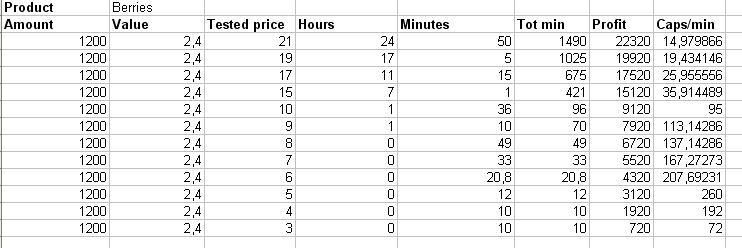No, I think he is right. For me the value is 2,5 (2,4 for the 10 water and 0,1 for the fruit pickers)
The calculation is right I think.
It would be right if you were trying to figure out the profit per minute of your production buildings, and how profitable it is to manufacture this product (versus producing something else).
When you are testing your production units, you take the price of the raw mats (plus your production costs), and compare it to what the finished product is worth on the market. That makes your profit calculation for the production unit (in this case, the fruit picker).
When you are testing your store, you have to resume your profit calculations where you left them. You have to start with the value the finished product is worth on the market -
technically, its worth at the end of your production profit calculations-, and compare it to what you can obtain for it in stores. That makes your profit calculation for the selling unit (the store).
Once you've done the profit calculations of the fruit picker, if for the profit calculations of the store, you re-start from the raw mats and the production costs, it means you counted some of the added value twice. You counted the 17.5

